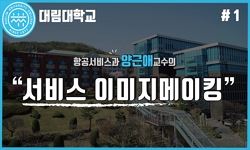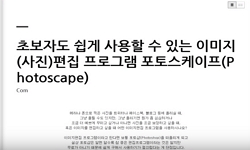Here are two goals for this study. This paper started from the question how should be the video records used to analyze modern Korean history, otherwise how much is it possible to use them under the same goal. I’d like to target at analyzing documen...
http://chineseinput.net/에서 pinyin(병음)방식으로 중국어를 변환할 수 있습니다.
변환된 중국어를 복사하여 사용하시면 됩니다.
- 中文 을 입력하시려면 zhongwen을 입력하시고 space를누르시면됩니다.
- 北京 을 입력하시려면 beijing을 입력하시고 space를 누르시면 됩니다.

해외 기록영화에 담긴 해방 전후 남북한의 사회상 비교 = A Comparative study on Social Aspect of South and North Korea before and after Liberation in the Overseas Video Records
한글로보기https://www.riss.kr/link?id=A103649451
-
저자
양정심 (대진대학교 인문학연구소)

- 발행기관
- 학술지명
- 권호사항
-
발행연도
2016
-
작성언어
Korean
-
주제어
영상기록 ; 해외 기록영화 ; 뉴스영화 ; 노획영상 ; 이미지 ; 사료 ; 해방 ; 분단 ; Image Record ; the Overseas Video Records ; Newsreel ; Seized Documentary Film ; Image ; Historical Material ; Liberation ; Division
-
등재정보
KCI등재
-
자료형태
학술저널
-
수록면
233-268(36쪽)
-
KCI 피인용횟수
3
- DOI식별코드
- 제공처
-
0
상세조회 -
0
다운로드
부가정보
다국어 초록 (Multilingual Abstract)
The US National Archives and Records Administration (NARA) holds the most amount of visual records. Among them, major documentary films about the space of liberation are included in the group of films from the US Army and North Korea. the North Korean regime produced numerous visual records as a propaganda tool.
The second goal of this study attempted to discuss the social aspects of the space of liberation, or the so called “history of three years after liberation.” South Korea and North Korea, US and USSR projected their perspective about the liberation and the establishment of the governments in South and North Koreas in video records. The competition between US and USSR around Korean Peninsula, represented by video images, too. They produced the documentary films on a large scale with their own view. Therefore analyzing the images and narratives of these films is deeply related to explaining the division of South and North Korea.
Very few attempts have been made to bring news films and other documentary films into the field of Korean history because it is not easy to historicize video records. Also, we need to conduct research not only regarding the content of the film but also technological aspects of the film. However, the fundamental issue is the historical methodology on the formation of relationship between visual records and history, or film and history. This was the point upon which this paper is based.
Here are two goals for this study. This paper started from the question how should be the video records used to analyze modern Korean history, otherwise how much is it possible to use them under the same goal. I’d like to target at analyzing documentaries, specifically the Overseas Video Records among them, including newsreels which have been visual materials based on fact. Since Korean video recordings about the space of liberation have not been well-preserved, resources owned by foreign institutions have a significant historical value. Of course, all documentaries are “resources with a perspective.” They show the motives of the country or the institution which produced the images, as well as the foreign perspective on Korean politics and society.
The US National Archives and Records Administration (NARA) holds the most amount of visual records. Among them, major documentary films about the space of liberation are included in the group of films from the US Army and North Korea. the North Korean regime produced numerous visual records as a propaganda tool.
The second goal of this study attempted to discuss the social aspects of the space of liberation, or the so called “history of three years after liberation.” South Korea and North Korea, US and USSR projected their perspective about the liberation and the establishment of the governments in South and North Koreas in video records. The competition between US and USSR around Korean Peninsula, represented by video images, too. They produced the documentary films on a large scale with their own view. Therefore analyzing the images and narratives of these films is deeply related to explaining the division of South and North Korea.
Very few attempts have been made to bring news films and other documentary films into the field of Korean history because it is not easy to historicize video records. Also, we need to conduct research not only regarding the content of the film but also technological aspects of the film. However, the fundamental issue is the historical methodology on the formation of relationship between visual records and history, or film and history. This was the point upon which this paper is based.
국문 초록 (Abstract)
미국은 공보부라는 민간영역 뿐만 아니라 군대에서도 많은 영상물을 생산했다. 미군 육군통신대는 미군 진주 직후부터 순차적으로 한국의 정치ㆍ사회적 상황을 촬영했다. 공보부 제작 영상들이 많이 소실된 것에 비해 미군이 생산한 영상들은 많은 분량이 현재 국립문서기록관리청(NARA)에 남아있다. 그리고 NARA는 한국전쟁 시기 미군이 노획한 북한의 기록영화도 다수 소장하고 있다. 이를 바탕으로 이 글은 미국과 소련, 남한과 북한 등 촬영 주체가 다른 기록영화를 서로 견주어 보면서 해방과 분단의 남북한 사회상과 미ㆍ소의 이미지 전략을 살펴보고자 했다.
38도선을 경계로 일본군을 무장해제 시키기 위한 명목으로 진주한 미국과 소련은 냉전으로 변모하는 국제정세 속에서 본격적인 세력 경쟁을 한반도에서 구현하기 시작했다. 자국의 정책과 문화 논리를 영상을 통해서도 파급하기 시작했다. 이는 미국도 소련도 북한도 남한도 마찬가지였다. 문맹인구가 아직은 다수인 나라에서 논픽션의 진정성은 대중에게 다가가기 쉬었던 것이다. 미소 양국의 세력 경쟁은 결국 분단으로 귀결되었고, 그 과정에서 자국에게 유리한 선전과 이미지를 위한 문화적 경쟁 또한 치열하게 이루어졌다. 남한은 미군정 기간 동안 점차 미국화 된 사회ㆍ문화적 영향을 받아들이게 되었고 북한의 소련화 경향도 마찬가지였다. 정치적 체제는 정반대이지만 선전과 이미지화라는 성격은 비슷하게 진행되었던 것이다.
이 글은 영상자료의 사료적 가치에 주목해서 해방과 분단의 사회상을 살펴보았다. 여기에서 주목했던 분석 대상은 영상자료에서도 ‘해외 기록영화’이다. 미군정기 국내의 영상기록이 거...
이 글은 영상자료의 사료적 가치에 주목해서 해방과 분단의 사회상을 살펴보았다. 여기에서 주목했던 분석 대상은 영상자료에서도 ‘해외 기록영화’이다. 미군정기 국내의 영상기록이 거의 남아있지 않은 상황에서 해외의 기록영화는 중요한 사료적 가치가 있다. 기록영화는 시각자료이자 1차 사료의 성격을 갖는다. 기록영화는 역사 현장의 모습을 직접 전달하는 장점이 있다. 그러나 기록영화를 비롯한 영상이미지는 목적을 가지고 촬영되었다. 영상기록이 당시의 시대를 그대로 보여주는 현장성도 있지만, 일상의 사건과 삶의 모습을 이미지로 기록했던 영상물은 촬영 당시의 기획자의 의도가 가미된 편집의 요소를 가지고 있다.
미국은 공보부라는 민간영역 뿐만 아니라 군대에서도 많은 영상물을 생산했다. 미군 육군통신대는 미군 진주 직후부터 순차적으로 한국의 정치ㆍ사회적 상황을 촬영했다. 공보부 제작 영상들이 많이 소실된 것에 비해 미군이 생산한 영상들은 많은 분량이 현재 국립문서기록관리청(NARA)에 남아있다. 그리고 NARA는 한국전쟁 시기 미군이 노획한 북한의 기록영화도 다수 소장하고 있다. 이를 바탕으로 이 글은 미국과 소련, 남한과 북한 등 촬영 주체가 다른 기록영화를 서로 견주어 보면서 해방과 분단의 남북한 사회상과 미ㆍ소의 이미지 전략을 살펴보고자 했다.
38도선을 경계로 일본군을 무장해제 시키기 위한 명목으로 진주한 미국과 소련은 냉전으로 변모하는 국제정세 속에서 본격적인 세력 경쟁을 한반도에서 구현하기 시작했다. 자국의 정책과 문화 논리를 영상을 통해서도 파급하기 시작했다. 이는 미국도 소련도 북한도 남한도 마찬가지였다. 문맹인구가 아직은 다수인 나라에서 논픽션의 진정성은 대중에게 다가가기 쉬었던 것이다. 미소 양국의 세력 경쟁은 결국 분단으로 귀결되었고, 그 과정에서 자국에게 유리한 선전과 이미지를 위한 문화적 경쟁 또한 치열하게 이루어졌다. 남한은 미군정 기간 동안 점차 미국화 된 사회ㆍ문화적 영향을 받아들이게 되었고 북한의 소련화 경향도 마찬가지였다. 정치적 체제는 정반대이지만 선전과 이미지화라는 성격은 비슷하게 진행되었던 것이다.
참고문헌 (Reference)
1 "해방조선을 가다, 국가기록원 소장"
2 "해방뉴쓰, 한국영상자료원 소장"
3 "한국근현대영상아카이브"
4 이순진, "지워진 한국영화사-문화영화의 안과 밖" 현실문화사 2014
5 안재성, "이관술 1902-1950" 사회평론 2006
6 김기덕, "영상역사학" 생각의나무 2005
7 허은, "영상과 아카이빙 그리고 새로운 역사쓰기" 선인 2015
8 마르크 페로, "역사와 영화" 까치 1999
9 장세진, "상상된 아메리카1945년 8월 이후 한국의 네이션 서사는 어떻게 만들어졌는가" 푸른역사 2012
10 찰스 암스트롱, "북조선 탄생 THE NORTH KOREAN REVOLUTION 1945~1950" 서해문집 2006
1 "해방조선을 가다, 국가기록원 소장"
2 "해방뉴쓰, 한국영상자료원 소장"
3 "한국근현대영상아카이브"
4 이순진, "지워진 한국영화사-문화영화의 안과 밖" 현실문화사 2014
5 안재성, "이관술 1902-1950" 사회평론 2006
6 김기덕, "영상역사학" 생각의나무 2005
7 허은, "영상과 아카이빙 그리고 새로운 역사쓰기" 선인 2015
8 마르크 페로, "역사와 영화" 까치 1999
9 장세진, "상상된 아메리카1945년 8월 이후 한국의 네이션 서사는 어떻게 만들어졌는가" 푸른역사 2012
10 찰스 암스트롱, "북조선 탄생 THE NORTH KOREAN REVOLUTION 1945~1950" 서해문집 2006
11 조혜정, "미군정기 뉴스영화의 관점과 이념적 기반 연구" 한국민족운동사학회 (68) : 323-356, 2011
12 김민환, "미군정 공보기구의 언론활동" 서강대언론문화연구소 1991
13 김 균, "미국의 대외 문화정책을 통해 본 미군정 문화정책" 한국언론학회 44 (44): 2000
14 프랑수아 니네, "다큐멘터리란 무엇인가 : "다큐멘터리와 그 아류들"" 예림기획 2012
15 폴 로다, "기록영화론" 영화진흥공사 2012
16 송남헌, "解放三年史Ⅰ" 까치 1985
17 NARA, "RG 242(National Archives Collection of Foreign Records Seized, 1941~)"
18 NARA, "RG 111(Records of the Office of the Chief Signal Officer)"
19 노성호, "A.S.C 영상자료를 통한 한국전쟁 연구의 새로운 가능성 -아시아문화연구소 소장 A.S.C 영상자료의 가치와 내용 검토-" 한국사학사학회 (27) : 101-132, 2013
20 토비 클락, "20세기 정치선전 예술" 예경 2000
21 김한상, "1945-48년 주한미군정 및 주한미군사령부의 영화선전: 미국 국립문서기록관리청(NARA) 소장 작품을 중심으로" 한국미국사학회 34 : 177-212, 2011
동일학술지(권/호) 다른 논문
-
1930년대 재만 조선혁명군의 항일무장투쟁과 한ㆍ중연합작전의 동향 - 국내언론의 보도 내용과 경향을 중심으로 -
- 한국민족운동사학회
- 황민호
- 2016
- KCI등재
-
- 한국민족운동사학회
- 배정현
- 2016
- KCI등재
-
- 한국민족운동사학회
- 박경
- 2016
- KCI등재
-
- 한국민족운동사학회
- 김재웅
- 2016
- KCI등재
분석정보
인용정보 인용지수 설명보기
학술지 이력
| 연월일 | 이력구분 | 이력상세 | 등재구분 |
|---|---|---|---|
| 2026 | 평가예정 | 재인증평가 신청대상 (재인증) | |
| 2020-01-01 | 평가 | 등재학술지 유지 (재인증) |  |
| 2017-01-01 | 평가 | 등재학술지 유지 (계속평가) |  |
| 2013-01-01 | 평가 | 등재학술지 유지 (등재유지) |  |
| 2010-01-01 | 평가 | 등재학술지 유지 (등재유지) |  |
| 2008-01-01 | 평가 | 등재학술지 유지 (등재유지) |  |
| 2005-01-01 | 평가 | 등재학술지 선정 (등재후보2차) |  |
| 2004-01-01 | 평가 | 등재후보 1차 PASS (등재후보1차) |  |
| 2002-01-01 | 평가 | 등재후보학술지 선정 (신규평가) |  |
학술지 인용정보
| 기준연도 | WOS-KCI 통합IF(2년) | KCIF(2년) | KCIF(3년) |
|---|---|---|---|
| 2016 | 0.81 | 0.81 | 0.72 |
| KCIF(4년) | KCIF(5년) | 중심성지수(3년) | 즉시성지수 |
| 0.65 | 0.66 | 1.616 | 0.06 |




 KCI
KCI KISS
KISS






